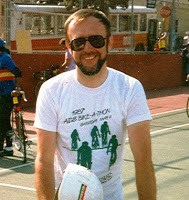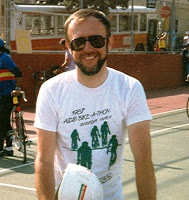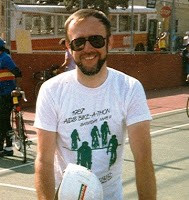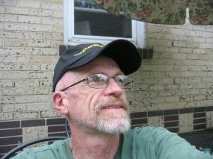strong and resilient. Their shapes and colors vary wildly from the palest
shades to the brightest hews. I have tulips in my yard that are pure white and
some that are so deep a purple as to appear black.
bloom, what is preparing flowers stalks and buds, and what has finished. Already
I have spotted tiny leaves breaking through the ground in my yard. Within weeks
flowers will appear.
spring with appearance in late February of the plum tree blossoms in Golden
Gate Park. Any day now, their pale pink flowers will appear breaking the dreary
coastal winter with their delicate brightness.
brilliant yellow of the forsythia that dares to announce Spring. Even though we
have many more weeks of winter, maybe even the worst of winter, ahead, these
tiny flowers will soon appear. I have two forsythia bushes in my yard. The
early one will show blossoms by the first of March. The other one is later by
about a month.
the porch and plant pansies with their delightful array of purples, yellows,
oranges, burgundies and splashes of white to brighten those late winter days.
Pansies love the cold and are beautiful in the snow. It’s the summer heat that
will kill them off.
their annual “death march.” I don’t know why this variety shows up so early only
to face hard freezes and heavy snow. But they persist and eventually bloom in
time for a spring snow to crush them. The snow won’t kill them, just bury them.
Fortunately, I also have later varieties with the good sense to wait until the
weather is more favorable.
and wait out the winter weather to bloom later. A little bit of snow heightens
the brilliance of the colors in bloom. But it doesn’t take much to push them
all to the ground.
will overnight burst into white blossoms. And then the iris will show up. When
I was a kid, we called them flags because they bloomed around Memorial Day.
Maybe because of climate change, my iris seem to be almost finished by the end
of May.
best. My favorite is the bright red rose near the back door.
summer, the hawthorn trees flower. The white flowers are pretty but they,
frankly, stink. For two weeks, my backyard will smell of rotten fruit. However,
the bees love these malodorous blooms and the yard will hum with the buzzing of
thousands of bees harvesting what must be rich nectar.
flowers on the herbs I grow. I use the oregano, sage, chives and thyme from the
garden but I think the bees get more use of my herbs. The little yellow arugula
flowers seem to be especial favorites.
lilies. They used to be a late summer flower with their oranges and yellows.
But now, it seems that they bloom by early July and are finished before August.
Maybe it’s the dry heat of Colorado, but late summer sees a lull in flowers.
And then in September, some come back to life—like the hot pinks and reds of
the impatiens—and bloom again before the cold returns.
cobalt blue flowers along the front walk. And I know what time of year it is by
the shade of the sedum. Early summer, its flowers are white. Gradually, the
color turns to a pale pink. And in the fall, they deepen to a dark red and then
rust. It’s amazing to watch this one flower change color over time.
then grew up in San Francisco, and is now growing up in Denver. He retired from
work with non-profits in 2009 and now bicycles, gardens, cooks, does yoga,
writes stories, and loves to go out for coffee.




